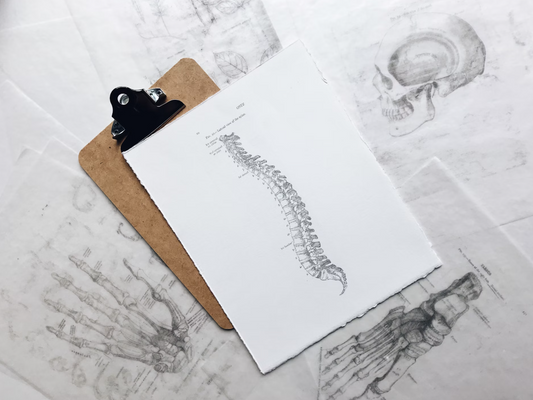Our lungs are vital organs that support every breath we take, yet many of us overlook how something as simple as posture can significantly impact lung function. Whether we’re hunched over a desk or slouched on the couch, poor posture can restrict the movement of our diaphragm and reduce the efficiency of our breathing. The good news is that by improving posture, we can unlock better lung function and support optimal respiratory health.
In this article, we’ll explore the connection between posture and breathing, how alignment affects lung capacity, and practical tips to enhance both through mindful posture and breathing exercises.
The Link Between Posture and Lung Function
The way we hold our bodies directly influences the space available for our lungs to expand. When we slouch or slant our shoulders forward, the muscles involved in breathing are constrained, and our lungs may not fully expand, limiting our oxygen intake.
How Poor Posture Affects Breathing:
- Restricted Diaphragm Movement: The diaphragm, the primary muscle responsible for breathing, needs space to move downward as we inhale. Poor posture, such as slouching or rounded shoulders, can compress the diaphragm and reduce its efficiency.
- Decreased Lung Expansion: When the chest collapses forward, it limits the volume of air that can enter the lungs, resulting in shallow breathing.
- Increased Tension: Misalignment of the spine and ribs can create tension in the muscles surrounding the rib cage, making it harder to take deep, full breaths.
On the other hand, maintaining good posture allows the diaphragm to move freely, helps the rib cage expand fully, and ensures the lungs can fill with air more efficiently.
How Proper Alignment Enhances Lung Function
When we practice proper posture, we essentially give our lungs the room they need to work at their best. A well-aligned body allows for deeper, more effective breaths, which helps improve oxygen intake and promotes better overall lung health.
Key Benefits of Proper Posture for Lung Health:
- Increased Lung Capacity: By creating space for the lungs to expand, proper alignment supports full oxygen intake with each breath, helping to maximize lung capacity.
- Improved Oxygenation: With optimal lung function, more oxygen reaches the bloodstream, improving energy levels, reducing fatigue, and supporting overall well-being.
- Better Breathing Efficiency: Proper posture encourages deeper, diaphragmatic breathing, which is more efficient than shallow chest breathing.
- Reduced Respiratory Strain: Good posture reduces unnecessary tension in the muscles that assist in breathing, lowering the strain on the respiratory system.
Breathing Techniques to Pair with Good Posture
While improving posture is a key first step, pairing it with specific breathing exercises can help take lung function to the next level. Here are some techniques that complement proper alignment and strengthen the muscles involved in breathing:
1. Diaphragmatic Breathing (Belly Breathing)
This technique encourages deep breaths that fully expand the diaphragm, improving lung capacity and oxygen intake.
2. Box Breathing
A technique used in stress management, box breathing helps enhance lung capacity and promotes slow, controlled breaths.
3. Pursed-Lip Breathing
Particularly useful for individuals with shallow breathing or lung conditions, pursed-lip breathing makes breathing more efficient and helps control airflow.
Tips for Improving Posture and Breathing Throughout the Day
Achieving better lung function doesn’t require major lifestyle changes—it’s often the small adjustments that can make a big difference. Here are some practical tips to maintain good posture and breathing habits throughout your day:
1. Mind Your Desk Posture
If you spend long hours sitting at a desk, make sure your workstation is ergonomically friendly. Sit up straight with your shoulders relaxed and your feet flat on the floor. Your computer screen should be at eye level, and your arms should be at a 90-degree angle when typing. This alignment will help support better posture and lung function.
2. Stretch Regularly
Take short breaks throughout the day to stretch and move. Standing tall with your chest open, arms raised overhead, and shoulders back will counteract the forward hunching that often occurs during sedentary activities.
3. Engage in Regular Physical Activity
Exercise, especially activities like yoga, Pilates, or swimming, promotes better posture and strengthens the muscles used in breathing. These practices also encourage mindful breathing, which supports lung health.
4. Sleep with Proper Alignment
Sleep on your back or side with a pillow that supports your neck and head in alignment with your spine. Avoid sleeping on your stomach, as it can compress your chest and restrict your breathing.
Conclusion: Aligning Your Body for Better Breathing
Breathing and posture are more closely connected than we might think. By simply focusing on improving posture, we can open up the chest and abdomen, allowing the lungs to fully expand and function more efficiently. Combining good posture with deep breathing exercises can unlock the full potential of our respiratory system, enhancing lung health, increasing oxygen intake, and supporting overall wellness.
Start incorporating these mindful habits today, and you’ll soon notice the benefits of better lung function, improved energy, and a more relaxed, centered body.




